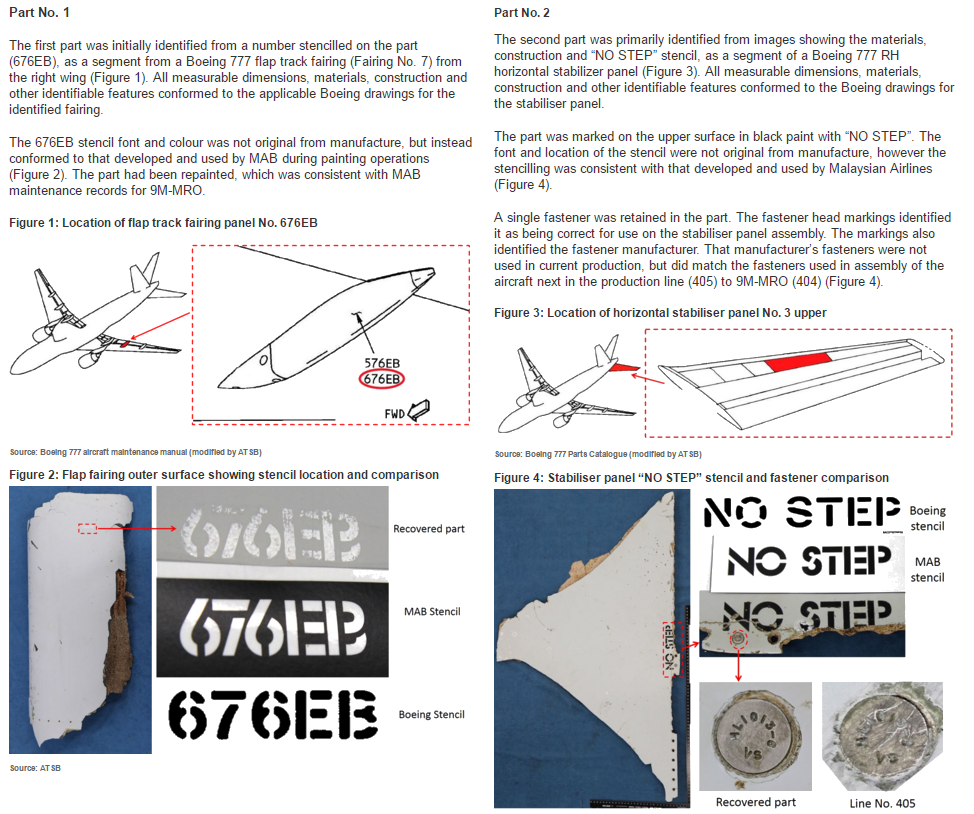Malaysia Airlines Flight 370 was traveling from Kuala Lumpur to Beijing with 227 passengers and 12 crew members on board when it disappeared from radar shortly after takeoff on March 8, 2014. Radar tracking showed the plane made at least three unexpected turns without the pilots signaling an emergency, and hourly satellite signals suggested the plane headed to the remote Indian Ocean before running out of fuel.
An international search effort to find the aircraft turned up nothing — no debris, no bodies, no oil slick.
However, on December 27, 2015 and February 27 2016, two items of debris were independently found, approximately 220km apart, on the Mozambique coast. Assistance from the Australian Transport Safety Bureau (ATSB) was requested by the Malaysian Government in the formal identification of the items to determine if they came from the Malaysian Airlines Berhad (MAB) Boeing 777 aircraft, registered 9M-MRO, operating as MH370.
The Australian Transport Safety Bureau, which is investigating the disappearance of flight MH370, concluded in its report today the following:
Part No. 1 was a flap track fairing segment, almost certainly from the Malaysian Airlines Boeing 777 aircraft, registered 9M-MRO.
Part No. 2 was a horizontal stabiliser panel segment, almost certainly from the Malaysian Airlines Boeing 777 aircraft, registered 9M-MRO.
The key to the findings surround some stenciled code on the parts — the stencils make it clear that these are like;y parts associated with a Malaysian Arilines Boeing 777 craft. Some details (click to embiggen):
At the time of writing, ongoing work was being conducted with respect to the marine ecology identification as well as testing of material samples. The results from these tests will be provided to the Malaysian investigation team once complete.
Until now, the only other confirmed piece of debris from the Boeing 777 was a wing part that washed ashore on the French Indian Ocean island of Reunion last year. Authorities could not confirm the Reunion debris was from Malaysian Air (but it was pretty likely).
Taken together, the debris findings are consistent with the belief that MAB 370 crashed somewhere in a remote stretch of the southern Indian Ocean about 6,000 kilometers (3,700 miles) east of Mozambique. Authorities had predicted that any debris from the plane that isn’t on the ocean floor would eventually be carried by currents to the east coast of Africa. However, given the vast distances involved, the variability of winds and the time that has elapsed, it is impossible for experts to retrace the parts’ path back to where they first entered the water.
Love me some airplane forensics.

